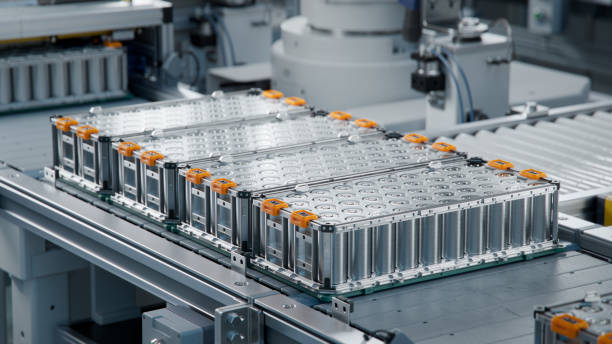One of the most important parts in an automated system is the capability of item recognition without physical interaction. This feature is known as ‘touch-less’ surveillance, and in automation it is made possible with the use of proximity sensors. However, it has been noticed that difficulties arise in choosing the correct proximity sensor, which can be either PNP or NPN. Despite the fact that both of them perform the same duties, they have distinct applications because of differences in the electrical output configuration. And while most industrial automation suppliers will have a stock of multiple varieties of proximity sensors, knowledge on the differences between PNP and NPN sensors can greatly improve a business’ selection for its automation systems. The following article explains the major differences, uses, and factors to consider in choosing a PNP or NPN proximity sensor.
What is a Proximity Sensor and Why is It Important?
A proximity sensor is defined as an electronic instrument that has the ability to sense whether an object exists or not within a certain distance from the sensor without any physical contact. These devices are very common in many industrial processes that require automation, such as detection, positioning, and safety processes. Proximity sensors include inductive, capacitive, ultrasonic, and magnetic types, each capable of detecting specific materials while functioning in certain environmental conditions.
These configurations are concerned with how the output signals for the PNP and NPN proximity sensors are configured. The main difference between them is how an object’s presence is detected with regard to the switching mechanisms used, which determines their compatibility with different PLCs and other control systems. Both configurations are available from industrial automation suppliers, and selecting the correct type ensures smooth integration into existing automation setups. Errors done while selection make the system non-compatible, leading to additional wiring changes for proper functioning.
PNP and NPN Sensors: Checklist
The primary distinction between PNP and NPN proximity sensors is how they handle signal output. For example, PNP sensors offer a positive voltage at their output, typically 24V DC; the NPN sensors A negative (ground) signal. These configurations determine how the sensor interacts with the control system that is connected, and affects how easy the integration will be.
The supply of current to the load makes it correct to refer to PNP “sourcing” sensors, while NPN “sinking” sensors are so named because they NPN sinks current into the circuit. This difference is critical for electrical compatibility, industrial preference, and environmental conditions.
PNP sensors are mainly used in Europe, whereas NPN sensors are common in North America and Asia. But regardless of the region, the selection depends upon the automation system and its controller in the facility. Modern controllers can accommodate both types of sensors, but older systems are usually single-sensor type systems (either PNP or NPN), so it is critical to check before setting them up.
Benefits of PNP and NPN Sensors and Their Areas Of Use
PNP sensors are widely used in industrial automation applications for systems that integrate PLCs and safety systems especially in Europe because they are quite common in Europe. Their resistance to electrical noise is one of the key benefits which ensures that they do not produce false signals when used in electromagnetic interference dense environments. Due to this features, PNP proximity sensors and other similar positive-switching sensors are often selected for robotic arms, monitoring systems for conveyor belts, and other automated material handling systems.
Conversely, NPN sensors are greatly valued in control systems that are programmed to work with negative output signals. These sensors are typical in microprocessor-based controllers, direct transistor circuits, and automation systems where fast switching is essential. NPN sensors do, however, require additional grounding in noisy electrical environments, especially under high power conditions.
For functions and components that are safety-critical, including emergency functions and guarding on machines, PNP sensors are the preferred choice for their easy detection of failure mode. PNP sensors are easier to troubleshoot because they do not send a positive signal when they are malfunctioning. In this way PNP sensors reduce the possibility of unnoticed failures. Many suppliers for industrial automation applications recommend PNP sensors in cases where fail-safety and reliability of the signal is required.
Fulfilling Your Automation Needs
Choosing the right proximity sensor that meets your automation needs the closest can be particularly daunting especially if you are unsure of the type of proximity sensor compatible with the available control system, other surrounding conditions and industry standards. Most importantly, make sure that the existing PLC or automation controller accommodates PNP or NPN input signals. Some modern controllers are capable of both but older systems may be limited to one.
In picking either PNP or NPN sensors, environmental factors are crucial as well. For example, PNP sensors are usually best suited for use in areas with elevated electrical noise or erratic power sources due to their much higher resistance to noise. On the other hand, if a system is already built around NPN parts, it is much more reasonable to retain compatibility with NPN sensors to prevent excessive rewiring. Suppliers of industrial automation will assist businesses in evaluating their automation configurations and choosing the best sensors that will improve system performance while ensuring future trouble free operation.
Also, in assembly line operations or robotics that require quick response time as one of the essential features, it is ideal to use either PNP or NPN sensors, however, NPN sensors tend to be favored due to their faster switching speed. Nonetheless, advanced models of PNP sensors, which have integrated digital processing elements, are much more suitable for long range sensing, precision object detection, and smart sensor integration.
Conclusion
The major functions of both PNP and NPN proximity sensors are stripped away from their electrical peculiarities; these two are capable of working without physically touching the subject. PNP sensors are used in Europe because of their positive voltage output, while NPN sensors which are used in most American and Asian industries, deliver a negative (ground) output.
Industrial automation suppliers have an abundance of PNP and NPN sensors available which guarantees their customers the option that is most suitable for their automation systems. While selecting a sensor, companies have to think about environmental conditions, compatibility with control systems, and fail-safe requirements. Picking the most suitable sensor can allow the company to maximize automation effectiveness, minimize downtime, and enhance system dependability which in turn results in improved productivity and reduced costs in the long-run.

